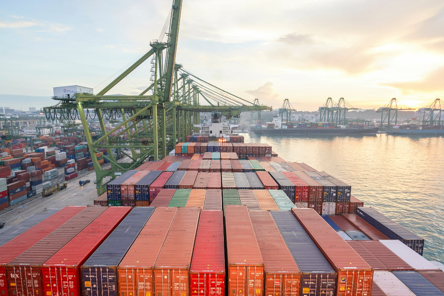The U.S.-China tariff landscape continues to reshape global supply chains, and the latest developments are already being felt across major shipping lanes. After months of hesitation and shifting strategies, importers are once again accelerating activity. But with space tightening quickly and rates rising, companies need to act fast to stay ahead of the curve.
From Pause to Pressure: How the Market Flipped
In the wake of President Trump’s "Liberation Day" tariffs earlier this year, many U.S. importers hit the brakes on China-origin shipments. The policy introduced a universal 10% tariff on nearly all imports, alongside steep “reciprocal” tariffs targeting countries with significant trade imbalances. China faced a compounded tariff rate exceeding 75%, with Vietnam and India seeing new tariffs of 46% and 26%, respectively.
Uncertainty about cost implications and overlapping provisions led to widespread booking cancellations. Many abandoned cargo as well, with importers unable or not wanting to pay the increased tariff obligation. At the same time, demand surged in Southeast Asia as importers sought to diversify sourcing through a “China +1” approach, increasing shipments from Vietnam, India, and Malaysia.
With declining demand from China, ocean carriers responded by blanking sailings. By May and June, LA and Long Beach ports had 59 blank sailings scheduled, while Oakland reported 39 — a clear indication of the market slowdown.
A Resilient Rebound is Already Underway
Now, the market is rapidly rebounding. The recent pause, announced on May 12, in tariff escalation has spurred renewed booking activity. At SEKO, we’re seeing it firsthand.
“Almost all clients who had cancelled shipments have started booking again. Peak season surcharges and general rate increases are due to be implemented, and additional space won't be available until next month — and we are coming into the normal pre-holiday peak season,” says Clint Dvorak.
With the holiday retail calendar fast approaching, the race is on to secure space before capacity tightens further.
What Importers Should Be Doing Now
The renewed shipping activity doesn’t mean smooth sailing just yet. Importers are still navigating complex and evolving tariff structures, many of which overlap or contradict. This has led to delays in decision-making, frozen pricing strategies, and increased reliance on bonded warehouse space as companies try to buy time.
Some importers with Canadian operations have even rerouted orders north as part of a “wait and see” strategy, hoping for clarity in future trade agreements.
But with general rate increases and peak season surcharges already in motion — and additional space not expected to open until next month — hesitation comes with real risk.
What’s Next?
Our team is actively monitoring developments day by day, ensuring we have the latest information to guide our clients. With 58 U.S. locations and 8 locations across China and Hong Kong, SEKO is well positioned to support your international trade operations and help you take advantage of new opportunities created by this deal.
SEKO advises clients to continue to utilize and consider the benefits of deferring duty payments utilizing direct ACH along with periodic monthly statement, which provides an average payment terms of 36 days for duty.
SEKO also advises clients to review HS code classifications and entry dates for products traded with China to ensure proper tariff treatment under this new agreement.
In addition, the 90-day window provides a level of certainty around tariffs on Chinese merchandise which has not existed in several months. Importers should review their supply chain to identify if this creates opportunities to move up purchase orders to minimize the impact of the potential for tariffs being increased at a later time.
With a potential rush of orders and/or pull forward of traditional peak season, combined with the repositioning of airplanes and vessels on the TPEB route, it is advised to make bookings as soon as possible with your SEKO representative.
Take Action: Schedule a free 30-minute consultation meeting with our team of experts today to explore how we can keep your supply chain moving smoothly.
If you have questions, please reach out to your SEKO representative, or email us at hello@sekologistics.com.



